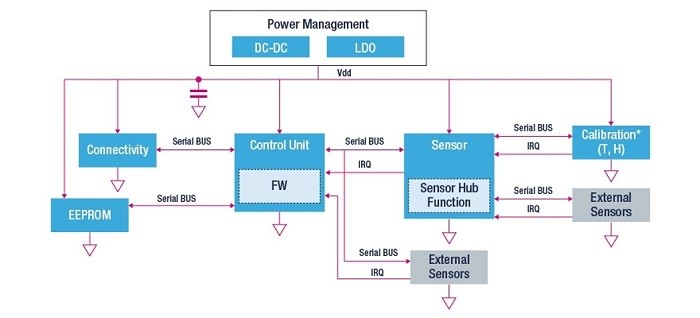If you’ve been in a grocery, pharmacy, or big box store recently – or lined up outside a Starbucks – you’ve seen the duct-taped X’s telling you where to stand to keep your social distance from the person in front of you. And if you’ve been taking walks – or just walking down the aisle in the grocery store – you’ve probably gotten pretty good at gauging just what six feet away looks like.
Not surprisingly, as the pandemic continues on and, with it social distancing requirements, there will be technology-based solutions that can save us from having to rely on the tape measure and the eyeball.
I recently came across a post on the topic, from the perspective of retail applications, written by Andrea Berry of STMicroelectronics and published on embedded.com.
Presence-detection solutions are not one-size-fits-all. The core sensors and technologies required to accomplish the variety of features and use cases are as diverse as the applications and environments in which they are used. In each case, system architectures must take into consideration environmental factors; the shape, structure, and layout of the space; power availability; node-to-node communications requirements and constraints; and data and information security.
Here are the areas that Berry notes are likely candidates for technical solutions, and what those solutions might look like:
Occupancy-density indication
Many stores limit the number of shoppers who can be in the store at the same time. But once they’re in there, how do you keep them from jamming the aisles and clumping together? In stores that are set up using aisle-based layouts – and this covers pretty much all grocery stores, chain pharmacies, and big-box stores, but not department stores or boutique shops:
Simple motion-detection technology, similar to what is used in home security systems (typically based off of passive infrared, time-of-flight, microwave, mirror optic, or ultrasonic sensors, or a combination thereof), could be used at each end of the aisle to determine when someone is entering or exiting.
Alerts could be triggered if someone were entering the wrong way – many stores are now using tape arrows to indicate which direction you should be rolling your cart in – or if the capacity of the aisle was reached and shoppers would not be able to socially distance. This type of solution wouldn’t do anything to prevent anyone from getting in your space when you’re reaching for that last box of pasta, but it could be used to keep shoppers moving in the right direction, and limiting the number of shoppers in each aisle.

“Designing a variety of proximity sensing building blocks requires a range of sensor, power management, and connectivity solutions.”
Absolute social-distancing measurement
There are a number of different technologies that can be used to solve the social distancing problem: optical sensors, radar/LIDAR, pressure sensors, microphone arrays, RFID localization and zoning, Wifi-Bluetooth.
Given the presence of security cameras, stores may already have the infrastructure in place to put optical sensors in place.
Image processing may be performed at the edge by the sensor node, with real-time alert at the sensor if there was an occupancy exception in that area. …Both visual and thermal optical sensors could be used in such an application.
Like optical sensors, “radar and LiDAR could be used to accurately pinpoint the location of every person within a given space.” The advantage here is that they are longer range than optical sensors, so you’d need fewer of them. The disadvantage is that stores with aisle formats have a lot of obstructions, so deployment could be tricky.
Pressure sensors (MEMS, strain gauge) could be embedded in the flooring to detect when shoppers are getting too close to each other for comfort, but this would be a costly solution that might be overkill when it comes to social distance monitoring.
Microphone arrays, with ultrasonic microphones picking up the sound a shopper’s making, could work for social distancing but the work (signal conditioning, intelligence processing) involved in implementing a solution may not be worth it.
Carts and baskets could be given an RFID tag, which could be used to determine where those carts and baskets are. But, as anyone who’s ever done any shopping knows, people do from time to time step away from their carts, and it doesn’t do much good, health-wise, if the carts are socially distanced but the living, breathing shopper aren’t.
While there are privacy issues involved, Wi-Fi and Bluetooth location determination could be easily implemented, given that nearly everyone has a cellphone with them and given that many stores already track patrons entering when their mobile starts looking for a Wi-Fi signal. Not only could a Wi-Fi approach be useful for social distancing, but it could also be used for contact tracing if needed.
Social distancing requirements will likely be with us for a long time to come. So far, we’ve been relying on old-fashioned methods to maintain it. It won’t be long before the technology to enable social distancing comes along.
